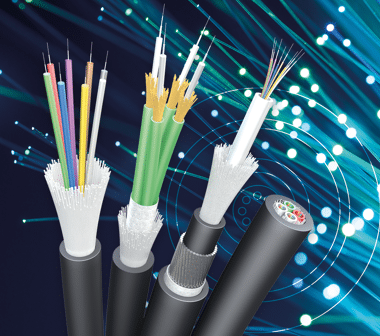Oufu Optical Fiber Cable Co.,Ltd
Address: Shenyang, Liaoning, China
Contact person: Manager Zhang
Phone: 400-964-1314
Mobile phone: +86 13904053308
【whatsapp && wechat】
2024-07-11 1688
Choosing the Right Armoured Fibre Optic Cable: A Comprehensive Comparison Guide
In the realm of telecommunications, industrial automation, and numerous other sectors, armoured fibre optic cables play a pivotal role in ensuring reliable and high-speed data transmission. However, with a myriad of options available in the market, selecting the right armoured fibre optic cable for your specific application can be overwhelming. This comprehensive guide aims to simplify the process by outlining the key factors to consider and providing a comparative analysis of various types of armoured cables.

1. Understand Your Application Requirements
Before delving into the specifics of armoured fibre optic cables, it's crucial to understand your unique application requirements. Consider factors such as:
Environment: Will the cable be deployed in an outdoor, indoor, or harsh industrial setting?
Distance: What is the maximum length of the cable run?
Data Rate: What data rates are required for your application?
Protection Level: How much protection is needed against physical damage, moisture, or other environmental hazards?
2. Armour Types
Armoured fibre optic cables come in various forms, primarily distinguished by the type of armour used:
Metal Armour (e.g., Steel Tape Armour, Corrugated Steel Tube Armour): Offers high protection against mechanical damage, crush resistance, and rodent infestation. Suitable for direct burial, aerial installation, or where significant protection is needed.
Kevlar/Aramid Yarn Armour: Lightweight and flexible, providing excellent resistance to tension and abrasion. Ideal for applications requiring minimal bend radius and where weight is a concern.
Combination Armour: Some cables combine metal and Kevlar/aramid yarn armour for optimal protection and flexibility.
3. Core Count and Connector Types
Core Count: Determine the number of fibres (cores) needed based on your data transmission requirements. Single-mode fibres are commonly used for long-distance transmission, while multi-mode fibres are suitable for shorter distances and higher bandwidth applications.
Connector Types: Choose the appropriate connector type (e.g., SC, LC, ST, FC) based on your equipment compatibility and ease of installation.
4. Jacket Material
The outer jacket material plays a vital role in protecting the cable from environmental factors. Common jacket materials include:
Polyethylene (PE): Good moisture resistance and flexibility.www.adsscable.cn
Polyvinyl Chloride (PVC): Cost-effective and resistant to chemicals and abrasion.
Low-Smoke Zero-Halogen (LSZH): Environmentally friendly, producing minimal smoke and toxic gas during combustion.
5. Additional Factors
Bend Radius: Consider the minimum bend radius of the cable to ensure it can be routed through tight spaces without damaging the fibres.
Temperature Range: Ensure the cable's operating temperature range aligns with your application's environmental conditions.
Certifications and Standards: Look for cables that comply with relevant industry standards and certifications, such as RoHS, UL, or CE.
6. Comparative Analysis
Once you have a clear understanding of your application requirements, you can compare various armoured fibre optic cables based on the factors mentioned above. Here's a simplified example:
| Cable Type | Armour Material | Core Count | Jacket Material | Bend Radius | Temperature Range |
|---|---|---|---|---|---|
| Cable A | Steel Tape Armour | 12 Fibres | PE | 10mm | -40°C to +80°C |
| Cable B | Kevlar Yarn Armour | 6 Fibres | PVC | 20mm | -20°C to +60°C |
| Cable C | Combination Armour | 24 Fibres | LSZH | 15mm | -45°C to +85°C |
Based on your requirements, you can narrow down your options by assessing which cable best fits your criteria in terms of protection level, core count, flexibility, and other factors.
www.adsscable.cn
Conclusion
Choosing the right armoured fibre optic cable requires careful consideration of your specific application requirements. By understanding the key factors that influence cable selection, including armour type, core count, jacket material, and additional characteristics, you can make an informed decision that ensures reliable and efficient data transmission. Remember, the right cable can significantly impact the performance and longevity of your network infrastructure.